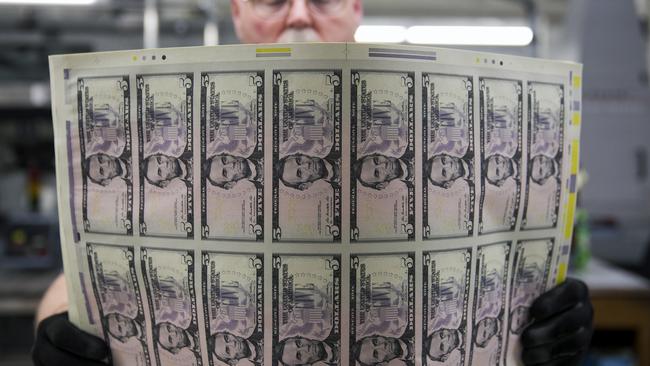There’s nothing new about modern monetary theory

With the presidential campaign under way, expect to hear a lot more about a shiny new toy of progressive economic thinking, “modern monetary theory”.
It seems to be the only intellectual contortion that might allow candidates to promise virtually unlimited government spending without any deleterious effects on currency, standard of living or liberty.
MMT rests on four basic assumptions:
● Because the government has monopoly power over its currency, it doesn’t face the same constraints that households and businesses do.
● As a result the traditional belief that governments must tax and borrow before deciding how much to spend is flawed. Governments can and should spend first to guarantee full employment.
They can then decide how much they should tax or borrow, if at all. The central bank can simply enter money into accounts to make up any difference.
● In this sense a government deficit is the equivalent of a private-sector surplus. Greater government spending produces greater personal prosperity.
● Taxes, not interest rates, are the means by which the government would, if necessary, control inflation.
At its core, MMT seems to rely on the concept that peace and prosperity are the natural order of things. One could be forgiven for believing that it is a short leap between current US fiscal policy and full-blown MMT.
Certainly, few leading politicians, Republican or Democratic, care much about budget deficits. With little evidence of inflation resulting from extraordinary monetary accommodation of the world’s central banks over the past 10 years, why would they?
Yet America currently counts among its many blessings the world’s only true reserve currency — what former French finance minister and president Valery Giscard d’Estaing described as an “exorbitant privilege”. That allows the US to get away with risky behaviour other countries could only dream of.
Remarkably, more than 50 per cent of America’s $US22 trillion ($32 trillion) in outstanding debt matures in the next three years. The weighted average cost of that debt rests at less than 2 per cent. A rise to 3 per cent would increase the deficit by $US220bn a year.
Economics is the study of allocating scarce resources. While it is true the US can now spend money it doesn’t have, it is also true that if this were a reliable path to prosperity, no country would ever lose its reserve-currency status.
The civilisations based in Athens, Rome, Constantinople, Florence, Amsterdam, Madrid and London all learned that painful lesson the hard way.
There is really nothing modern about Modern Monetary Theory. No one running for president in 2020 will tell you this, human nature being what it is, but Washington will overextend its exorbitant privilege too someday. The question is when.
Promising unlimited government spending without any concern for how to pay for it will hasten that day.
Jason DeSena Trennert is chairman and CEO of Strategas.
The Wall Street Journal



The Greeks and Romans already tried it — pity they were not the last.